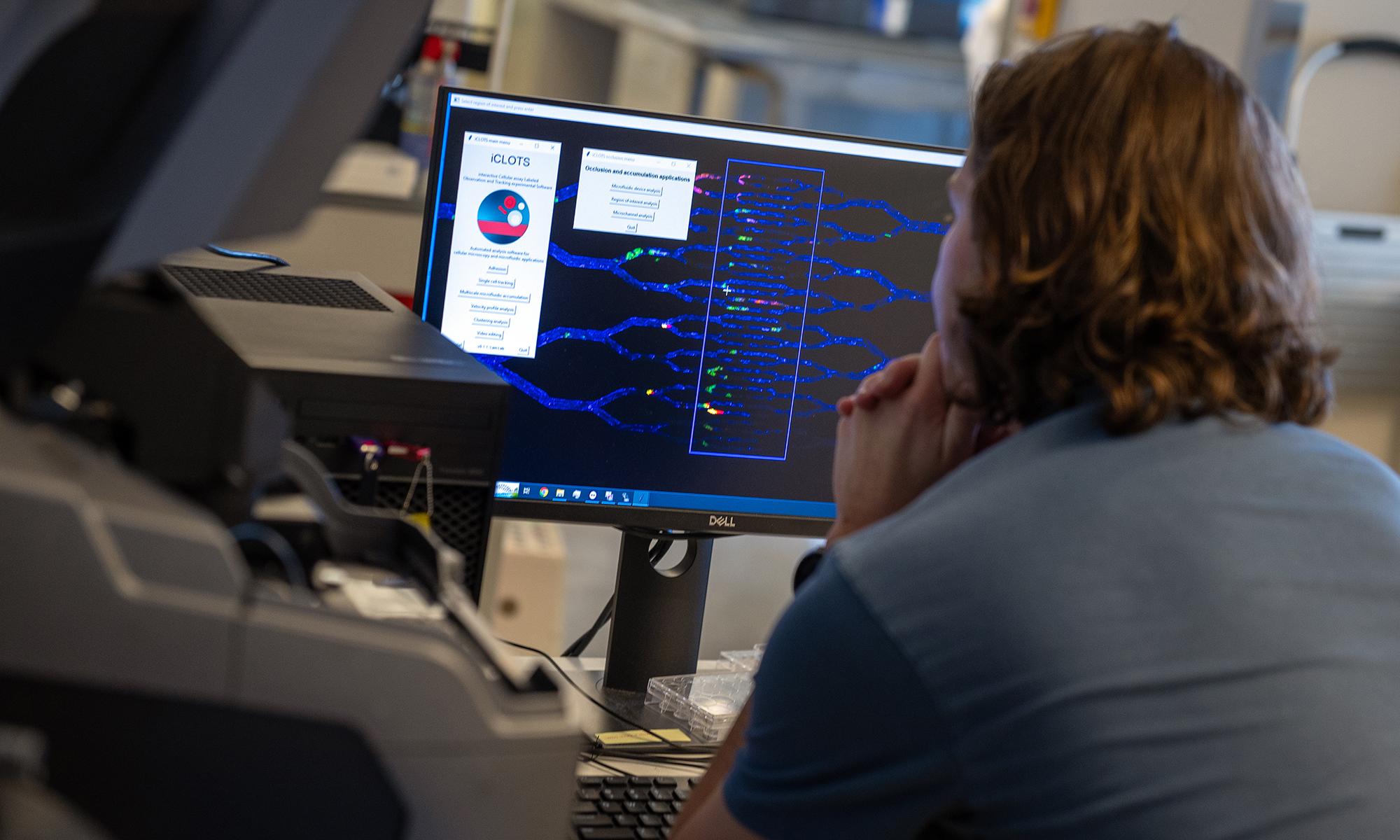New Software Means Biomedical Researchers Don’t Have to Be Computer Scientists Too
Aug 31, 2023 —

Biomedical engineering Ph.D. student Kirby Fibben uses the iCLOTS software to analyze experimental data collected using a microfluidic chip. The software, developed in Wilbur Lam's lab, allows any biomedical researcher to leverage the power of artificial intelligence for images and video without knowing how to write computer code and scripts. (Photo: Candler Hobbs)
The last few decades have brought advances in biomedical imaging that allow researchers to capture still and moving images at an unprecedented level of detail. Analyzing those images, however, often remains a manual, error-prone process that fails to maximize their value for understanding biological systems.
A team at Georgia Tech and Emory University has created a simple-to-use software program to help. It allows any researcher with imaging data to leverage powerful artificial intelligence algorithms and uncover new insights from their experiments — without knowing how to write complex computer code.
Called iCLOTS, the program is open-source and freely available on a dedicated website with extensive documentation and guidance. The team described the software and how it can help deepen understanding of experimental data in the journal Nature Communications.
Joshua Stewart
College of Engineering





